2017 Honda CBR1000RR Revealed
A Fireblade for the proletariat
After showing us Fireblade SP and SP2 versions last month at Intermot, today the all-new base Honda CBR1000RR made its debut in Italy. The high-end Öhlins and Brembo components from the SPs are swapped for less-spendy Showa and Tokico pieces.
2017 Honda CBR1000RR SP and SP2 Unveiling
Otherwise, much stays the same, including a plethora of motor mods, ride-by-wire throttles and IMU-based electronic rider aids. Even the SP’s titanium fuel tank is carried over to the regular RR, and its titanium muffler is said to be 6.2 lbs lighter than previous. Some 4.4 lbs was also shaved from the weight of the engine. It adds up to a CBR1000RR a purported 33 lbs lighter than the last generation, for a fueled wet weight of 432 lbs.
2017 Honda CBR1000RR SP and SP2 Video from AIMExpo
The engine boasts a higher compression ratio and revised cam timing, and Honda says power is boosted at both ends of the rev range, with a claim of an extra 10.7 hp up top (189 hp at 13,000 rpm) that might get CBR fans buzzed. It’s purported to have a power-to-weight ratio improvement of 14%.
Other tidbits gleaned from Honda’s press materials include a revised slipper clutch, engaging gears in the six-speed box that have all been lightened.
Tokico four-piston front brake calipers use high-performance track-ready brake pads, and are controlled by a new Lean-Sensitive ABS system that uses an IMU.
“With information from the IMU,” says Honda, “plus front- and rear-wheel speed sensors, the ABS modulator controls braking force according to lean angle, even when emergency braking. But it also allows for hard trail braking by using two parameters (deceleration derived from wheel speed and front/rear slip rates) plus lean angle to vary the threshold of ABS intervention.”
Suite Electronics… Honda’s first inline four-cylinder engine to employ Throttle by Wire (TBW) – derived from the system used by the RC213V-S – using an Acceleration Position Sensor (APS) integrated into the right handlebar switchgear to convert movement of the grip into an electrical signal sent to the ECU. “The return spring and other mechanisms inside the APS,” says Honda, “faithfully reproduce the initial play and feel of a cable, with throttle load set specifically for the Fireblade.”
Five levels of power are selectable, from Level 1’s peak output in all six gears to Level 5’s “most moderate throttle response for maximum security.”
Honda Selectable Torque Control (HSTC) controls engine torque via two sensing methods – wheel-speed sensors to compare front and rear wheel speeds, and through the underseat IMU which detects rotational speed in the chassis’ roll and yaw directions, and acceleration in the longitudinal, lateral and vertical directions. There are nine intervention levels plus off.
A Selectable Engine Brake (SEB) system provides three engine-braking settings. A Quickshifter with Downshift Assist system (like the one on the CBR1000RR SP1) is available as an option. You’ll access and play with all that through a full-color TFT liquid-crystal dash (again, like the RC213V-S’s) which automatically adjusts to ambient light, and offers three modes: Street, Circuit and Mechanic.
Three preset riding Modes, Track (1), Winding Road (2) and Street (3) provide different combinations of HSTC Honda Selectable Torque Control), Engine Power and Engine Braking level. Two additional User modes let riders add custom programs.
Rake and trail remain 23° 20’ / 96mm, but the hollow die-cast twin-spar aluminium frame’s rigidity balance has been “significantly adjusted to give even sweeter handling with outstanding steering response, feel and stability.” Honda claims the weight reduction of 15kg (33 lbs) has “transformed” the Fireblade’s handling.
Honda says the frame is 10% more flexible in the torsional plane, which works to deliver a faster-reacting chassis. Yaw moment of inertia has been reduced by 15%; roll moment of inertia by10%. The aluminum Unit Pro-Link swingarm is now about 10.6 ounces lighter, “while maintaining transverse rigidity and increasing torsional rigidity.”
Front suspension is by a fully adjustable 43mm Showa Big Piston Fork; rear suspension features a fully adjustable Showa Balance Free Rear Cushion (BFRC), the latest thing in double-tube valveless design. The aluminum wheels are a new five Y-shape design, saving approx. 100g (3.5 oz). Tire sizes are 120/70-R17 front and 190/50-R17 rear.
It’s all a very highly evolved motorcycle, adorned with narrower ergos and crisp LED lighting, yours in Victory Red or Matt Ballistic Black.
As we learned last month, the SP adds Öhlins S-EC electronic suspension front and rear: a 43mm NIX30 fork and TTX36 shock. And if things are really going well at your house, the SP2 homologation special (Nick Hayden’s new bike) adds Marchesini wheels and bigger valves in a tricked-out, MotoGP-derived head that’s ready to have Honda’s race kits bolted in place.
In short, this (these) is anything but a mildly warmed-over CBR1000R. Will it be enough? Yes, yes it will. Bring them on. Prices, for now, are To Be Determined.
More by John Burns



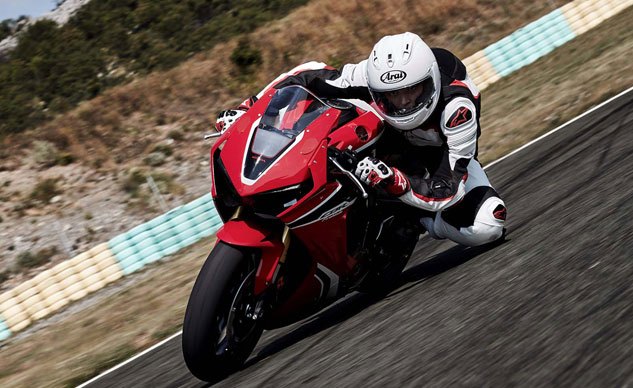
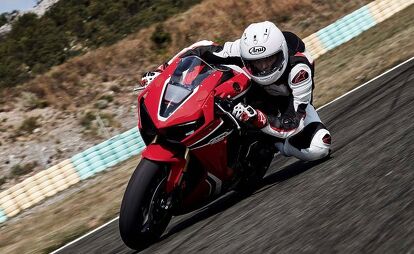








































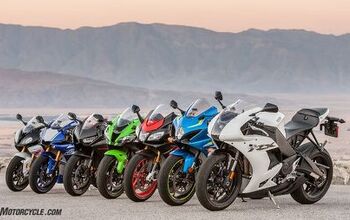


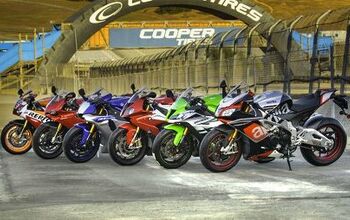
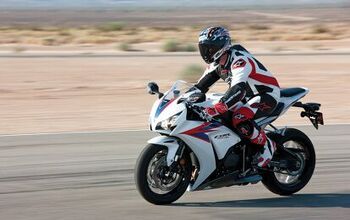











Comments
Join the conversation
Welcome back :)
Wonder why Honda stuck with the antiquated 190/50 tire instead of the 55.